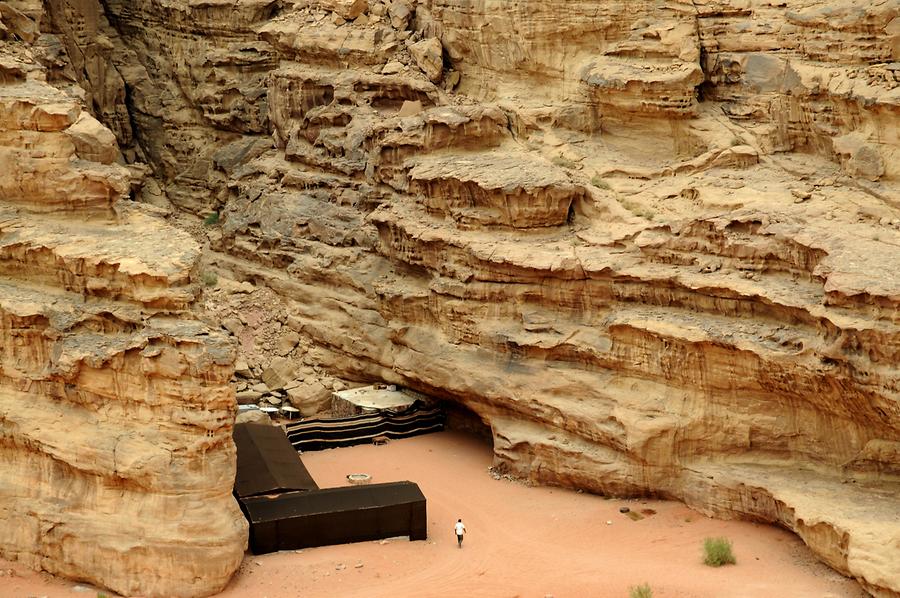Bedouin tent Wadi Rum#

Bedouin tent Wadi Rum, May 2009, © Gerhard Huber, under CC BY-NC 4.0 +Edu
Today Wadi Rum is inhabited by about 40 Bedouin families, who trace their descent back to the Nabateans. Their way of living is still closely oriented at the ancient traditions. While men are responsible for the herds, women manage the household and weave carpets and the canvases of the tents. Women live along with the children in a strictly segregated part of the tent, the haram, which can translated to “forbidden area” – the word “harem” originates from this word. In the male sphere, the el shigg, visitors are welcomed and entertained. No visitor leaves the tent without having drunk at least some cups of tea. For the Bedouins hospitality is like the “first commandment of the desert”, because without it survival in this meager landscape would be impossible.
Heute wird das Wadi von etwa 40 Beduinenfamilien bewohnt, die ihre Herkunft auf die Nabatäer zurückführen. Ihr Lebensstil orientiert sich immer noch stark an uralten Traditionen. Während sich die Männer um die Herden kümmern, ist die Frau für den Haushalt und das Weben von Teppichen und Zeltplanen zuständig. Sie lebt mit ihren Kindern in einem von Rest des Zeltes streng abgegrenzten Raum, dem haram, übersetzt „verbotener Bereich“, ein Wort, von dem übrigens der Begriff „Harem“ kommt. Im Männerteil, den el shigg werden Besucher empfangen und bewirtet. Ohne ein paar Tassen Tee verlässt kein Besucher das Zelt. Bei den Beduinen ist die Gastfreundschaft gleichsam das „1. Gebot der Wüste“, ohne das ein langfristiges Überleben in der kargen Landschaft kaum möglich wäre.